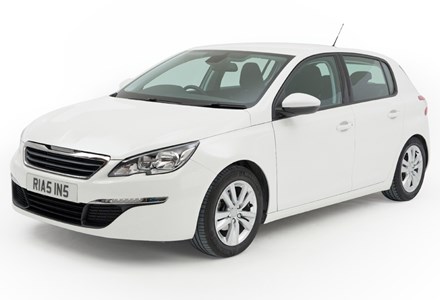Keeping your car roadworthy in winter
Although some of us greet the winter months gleefully, most people of working age and those in retirement can’t help but think of the impact the weather can have on their routines at this time of year, especially if they need a car to get around. As with anything, good preparation is important when it comes to keeping your car roadworthy throughout the winter months, with cold temperatures possible right up to March and sometimes even later. So what steps can you take?
Use the green hotspots to reveal our top tips:

Battery
Batteries are placed under greater strain during Winter. If your battery is around five years old, or is generally exhibiting problematic signs, it’s sensible to replace it.
Fluid Levels
Anti-freeze, screenwash and coolant levels should be checked manually in the run-up to Winter. Your car’s handbook should provide advice on which fluids to use.
Servicing
A service is highly recommended to ensure your car’s filters, engine, battery, wipers, alternator, gearbox and other components are in good condition and working well.
Door locks
Spraying a small amount of WD40 on locks and around handles can help reduce the risk of them freezing up in cold weather.
Lights
Lights are of increased importance in the darker winter months –get blown bulbs replaced without delay and ensure your lights are kept clean and free of damage.
Tyres
By law, tyres need to have at least 1.6mm of tread across the majority of the width. In winter it’s best to replace tyres when tread falls below 3mm. Make sure tyres are inflated to the correct pressure.
Keep in touch
If the weather’s looking treacherous, make sure that people know where you’re going and the route you’re taking. And don’t forget to charge your phone for emergencies.
Wiper blades
Make sure you can see clearly through the elements – replace loose or cracked wipers to avoid smearing, and clean your windscreen with suitable cloths and spray.
You
A smoother driving style is needed when conditions are treacherous - and journeys may take considerably longer than usual, so plan ahead.
Batteries1 are vital as cars have no chance of getting anywhere if they won’t start in the first place. It can vary by make and model but it's generally recommended to change a car’s battery every three years if possible, or five years at the most, and definitely if it’s causing you problems when winter's setting in.
Lights help you to see and also help your car to be seen by other drivers, which are both essential in the winter months. With the clocks going back, it gets darker earlier in the evening and fog and other adverse weather can reduce visibility on the road. Some car parts stores can fit bulbs for customers, which is a welcome service for some trickier models. The headlights and rear lights must be clean, the fog lights must work correctly and a car’s interior lights need to function properly, too.
Tyres legally need at the very least 1.6mm of tread across the central three-quarters2, but should be replaced well before this, particularly when heading into the winter. This is because stopping distances increase when ice, snow and even rain make roads more hazardous. You can check your tread depth with a 20p coin, by making sure that the outer band of the coin can't be seen when you insert it into a groove. Your spare wheel should also be checked for roadworthiness. And if you live in a notoriously wintry area, consider investing in some snow chains/socks or winter tyres.
Brakes are really important at this time of the year, not just because of the aforementioned increased stopping distances, but also because pedestrians, cyclists, pets, fallen tree branches, blown-over wheelie bins and a host of other obstacles. If your car's brakes squeal, make other noises or generate any unusual sensations, it’s best to get them checked at a garage. And when you're driving a car that’s been standing unused in cold weather for several days, set off gently in case the discs, callipers or handbrake have frozen up.
Cleaning a car regularly is advisable throughout the year, but it's particularly sensible in winter3 when maintaining clean windows, mirrors and lights is important to ensure visibility. Freezing temperatures and road salt or grit can play havoc with your car’s bodywork, especially if any previous damage has been sustained or rust has started to form. It’s recommended that you wash and wax the paintwork thoroughly in the autumn, and also wash and seal the underneath to reduce the chance of brake and fuel-line corrosion4.
Windscreen wipers are invaluable in winter months when rain, sleet and snow are more common. If the blades are starting to fray, leave greasy smears across your windscreen or are noisy, it’s time to replace them. To prolong the life of wiper blades and to prevent windscreens themselves becoming scratched, which can cause issues in low winter sun glare, it’s a good isea to wipe the blades with a clean cloth at various times throughout the year.
Fluids should also be checked in the run-up to winter. Make sure the correct levels of engine oil, brake fluid and coolant are maintained, along with screenwash, which you'll regularly need at this time of the year.
Keeping your car in a roadworthy condition is, of course, a legal obligation. Cars in the UK need an annual MoT test when they reach three years of age5 but it’s possible for a vehicle to be rendered unroadworthy at a younger age, or between MoT tests. Whether you're a young driver or one with many years of experience under your belt, you're responsible for addressing any areas of concern before they escalate. Plus, keeping your car roadworthy mean you'll have safer, smoother journeys.

